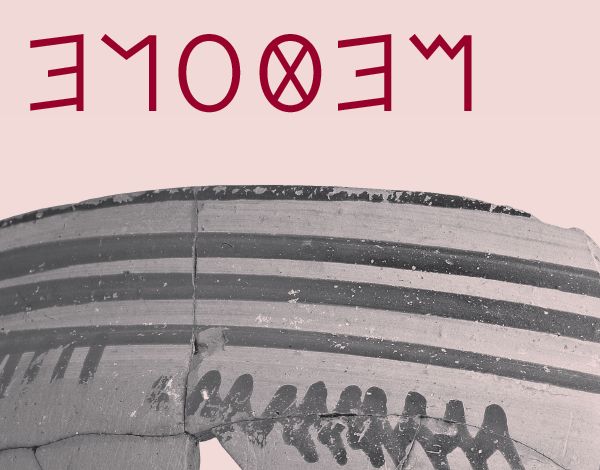Συνέδριο "Πανέλληνες στη Μεθώνη"
Centre for the Greek Language International Conference:
Panhellenes at Methone:
graphe in Late Geometric and Protoarchaic Methone, Macedonia
(ca 700 BCE)
Thessaloniki, June 8-10, 2012
Pavlos Zannas Hall, Olympion Theatre, 10 Aristotelous Square

Organizing Committee:
Jenny Strauss Clay, University of Virginia
Antonios Rengakos, Aristotle University of Thessaloniki
Yannis Tzifopoulos, Aristotle University of Thessaloniki
Recent excavations, ongoing since 2003-04, have begun to bring to light ancient Methone in
the southern tip of the Haliacmon River Delta, immediately north of modern-day
Agathoupolis, ca 35 kilometers south of Thessaloniki. Methone was established, according to
the ancient sources, by colonists from Eretria in Euboea during the second colonization (800-
500 BCE) and is the oldest colony of the southern Greeks on the northern shores of the
Aegean. By the end of the 8th century, with the safest harbor in the Thermaic Gulf, Methone
became a chief commercial and industrial centre.
Methone occupies two hills, which were located by the sea before sedimentations of
the rivers Axios, Loudias, and especially nearby Haliacmon pushed the coastline ca 500 meters
away from the site. On the eastern, lower hill habitation starts already by the late Neolithic
(5200 BCE) and continues throughout the Bronze Age (3000-1050 BCE), while a Late Bronze
Age (1400-1050 BCE) cemetery has been located on the western, higher hill. During the Early
Iron Age (1050-700 BCE) habitation extends on both hills, and the finds from the eastern hill
confirm that colonists from Eretria settled in Methone around 733 BCE.
Unique and so far unprecedented for Macedonia are the pots and potsherds
unearthed from a rectangular pit of 3.50x4.50 meters in plan and 10.50 meters in depth,
apparently used as an apothetes. The greatest majority of these sherds dates to ca 700 BCE, and
191 of them, recently pieced together, bear inscriptions, graffiti, and (trade)marks inscribed,
incised, scratched and rarely painted, which are published by Matthaios Bessios, Yannis
Tzifopoulos, and Antonis Kotsonas (http://ancdialects.greeklanguage.gr). The Conference will
be devoted to the significance of these finds for archaeology, ancient history, literature, and
the study of the Greek dialects.
For further information please contact: Yannis Tzifopoulos (tzif@lit.auth.gr); Maria Chriti
(glossologia@komvos.edu.gr).
Live Streaming: June 8-10, 2012, 9.00-14.00 & 17.00-20.00
http://www.filmfestival.gr/default.aspx?lang=el-GR&page=1046

